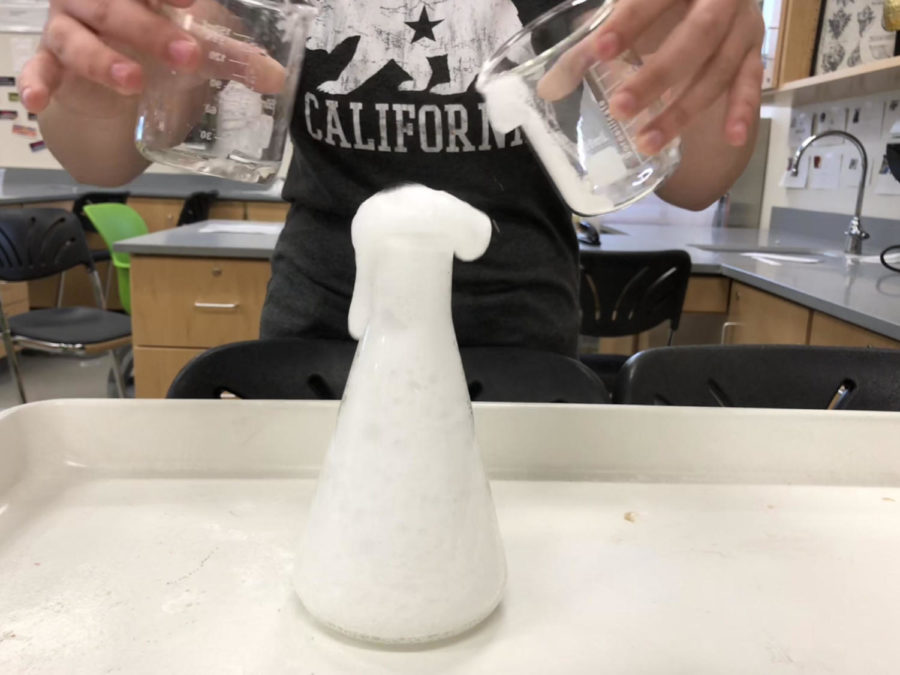Chemistry Students Recreate Practical Film Effects With Household Items
Sophomores wrote lab reports on their Genius Project that includes information on how to perform each demonstration and the chemistry concepts behind the reactions
Sophomores are spending second semester to create their own versions of common movie practical effects for their chemistry-based genius projects to learn how chemistry can be related back to real world examples.
“We want the genius project to be something that students do every school year, no matter what science class they are in, whether it is bio, chem or physics,” chemistry teacher Michael Tang said. “We want a genius project for every year, and for this year we wanted to do something that is chemistry-based but also something fun, and you know everybody loves movies…when we were planning for the school year, we decided that it will be fun for [students] to try to recreate some special effects that we see in movies.”
Each sophomore will be selecting one experiment to perform with household items. Many students are working with dry ice, common chemicals or household items like food coloring or styrofoam cups. After turning in an individual lab report, students are presenting their projects to their class during the first week of March.
Class presentations will be informational for students by explaining how each project relates back to what has been learned in chemistry. Students are also learning how certain chemicals can be misused and why being cautious in chemistry is important.
Students will join groups for the final piece of the genius project: a collaborative movie trailer using each of the members’ practical effects. Chemistry teachers have not decided if these groups will be student selected or assigned by each teacher.
“I like [the project] because it opens up for more ideas,” sophomore Pranav Chennareddy said. “It also helps us understand how to keep safe with dangerous household objects.”
By using household items, the project is more affordable and allows students to see what experiments they can conduct safely at home. In addition, it allows students to be innovative by creating interesting chemical reactions without harmful and out-of-reach chemicals.
“What I’ve learned the most about this project is how science can be applied to everyday life,” sophomore Dana Tang said. “I like how it goes from being an abstract concept in a classroom to something that can be applied to something that a lot of people find enjoyable.”
Your donation will support the student journalists of Portola High School. Your contribution will allow us to purchase equipment and cover our annual website hosting costs.

Maya Sabbaghian is one of two 2019-2020 Managing Editors. A staff member since 2016, Maya has previously served as a 2017-2018 Editor-in-Chief, and as...




